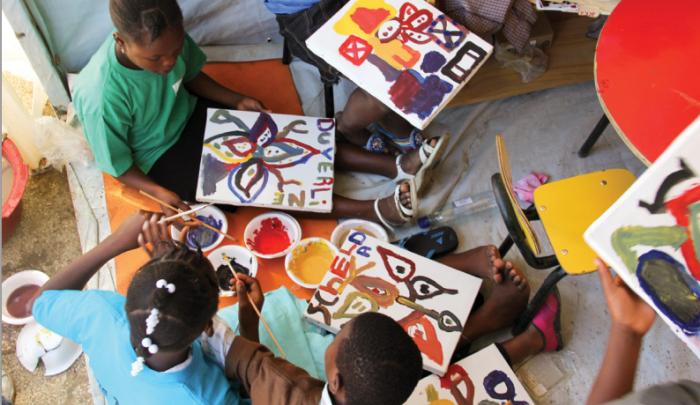

Port-au-Prince, HAITI (January 12, 2013) — World Vision today issued a three-years report on its response to the January 2010 earthquake in Haiti, bringing an end to its emergency relief efforts that provided food, shelter and basic support for millions of children and their parents. Moving forward, the organization will continue to work with children and their families on its long-term development programs throughout the country.
“World Vision’s disaster response for Haiti’s earthquake has drawn to a close, but with a 35-year history serving this country, our commitment to the people of Haiti remains as strong as ever,” said Jean- Claude Mukadi, World Vision’s national director in Haiti. “Many challenges existed in Haiti before the earthquake, and although much progress has been made, there are challenges that still exist three years later. World Vision remains committed to working alongside Haiti’s children and families to help equip them to flourish on their own.”
The report, entitled “Three Years On – Haiti Earthquake Response,” looks at the largest single-country emergency response ever undertaken by World Vision. Despite many challenges and complexities over the past three years, World Vision has successfully responded to both the initial emergency needs and the need for sustainable rebuilding. During the initial emergency phase, World Vision:
- Helped more than 2.5 million people receive emergency food
- Provided emergency shelter for more than 200,000 people
- Cared for 7,700 children in 30 camp-based play and educational centers
- Equipped 14 hospitals with life-saving supplies, enabling them to treat 412,500 cases of injury and illness
- Operated a dozen mobile and static health clinics, treating 109,000 patients
As Haiti struggled to recover from the earthquake, the country experienced additional unexpected crises, including three severe storms and a cholera outbreak that further impacted earthquake survivors. In response to the cholera outbreak, World Vision assisted over 15,500 cholera patients and reached more than 300,000 people with cholera prevention interventions. After Tropical Storm Isaac and Hurricane Sandy, World Vision provided economic recovery projects and emergency relief items like food, tarpaulins, hygiene kits and water purification tablets to 100,000 people around Port-au-Prince.
World Vision’s emergency response laid the groundwork for sustainable development. As the response shifted to rebuilding, World Vision helped over 25,000 people move into safer, more durable housing and constructed 20 schools, including a 15-classroom school in the Corail community benefiting 1,200 students. The organization also helped 15,000 people improve their food security while rebuilding communities through cash-for-work and food-for-work programs.
World Vision’s focus will continue to be on helping to build sustainable livelihoods for families, education, health and child protection and participation. The humanitarian agency has joined other organizations and the Government of Haiti to help develop a new, more accountable and responsive framework for humanitarian and development aid. Ongoing emphasis and support is also necessary in urban centers to mitigate the potential damage of future disasters. Large, densely packed populations live in Haiti’s urban areas, which magnifies the potential damage caused when disasters strike these areas.
“Following the launch of World Vision’s largest humanitarian response in history, life in Haiti continues to bring new, unwelcome developments that must be addressed, such as the cholera outbreak, hurricanes, and the food crisis recently declared at the end of 2012,” said Mukadi. “There is still much to be accomplished, and World Vision calls on all international donors to stay actively involved in Haiti’s recovery, so that together we can help the Haitian people build a stronger, more resilient Haiti.”
– END –
About World Vision:
World Vision is a Christian humanitarian organization conducting relief, development, and advocacy activities in its work with children, families, and their communities in nearly 100 countries to help them reach their full potential by tackling the causes of poverty and injustice. World Vision serves all people regardless of religion, race, ethnicity, or gender. For more information, please visit www.WorldVision.org/media-center/ or on Twitter @WorldVisionUSA.
Highlights
- World Vision today issued a three-years report on its response to the January 2010 earthquake in Haiti, bringing an end to its emergency relief efforts that provided food, shelter and basic support for millions of children and their parents.
- Moving forward, the organization will continue to work with children and their families on its long-term development programs throughout the country.
- There is still much to be accomplished, and World Vision calls on all international donors to stay actively involved in Haiti’s recovery.